‘Acted cool and calmly’: Hero teen may receive state SLSC honour
The brave boy who helped rescue a grandmother and her grandson from drowning had just earned his surf lifesaving certificate and may receive a state honour for his courage
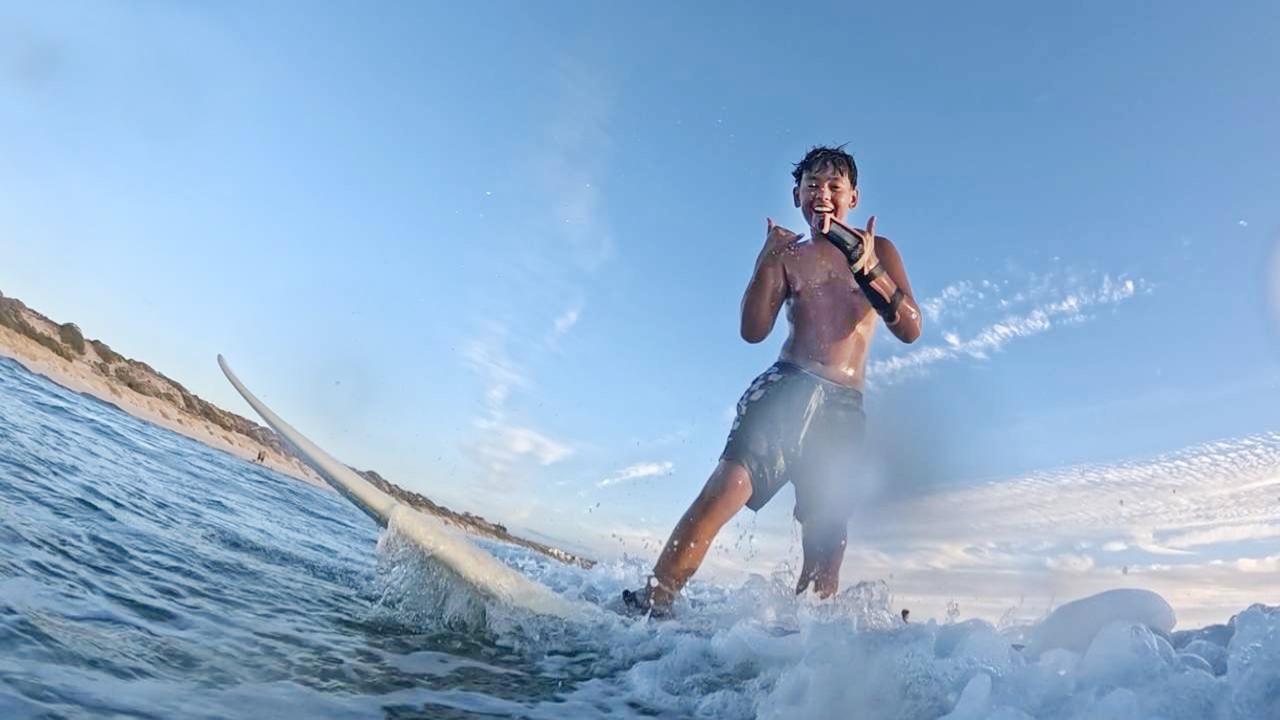
READING LEVEL: GREEN
A teenager will be recognised for his bravery after he and his friends rescued a grandmother and her grandson from a rip* at Adelaide’s West Beach.
Kai Nixon will be honoured by his surf life saving club following the rescue near the beach’s boat ramp.
The 14-year-old had been a member of West Beach Surf Life Saving Club since 2016 and president Graeme Cunningham said the boys’ group rescue was “impressive”.
“Kai assessed the situation and acted cool and calmly,” Mr Cunningham said.
“The outcome was good and he did a fantastic job.”
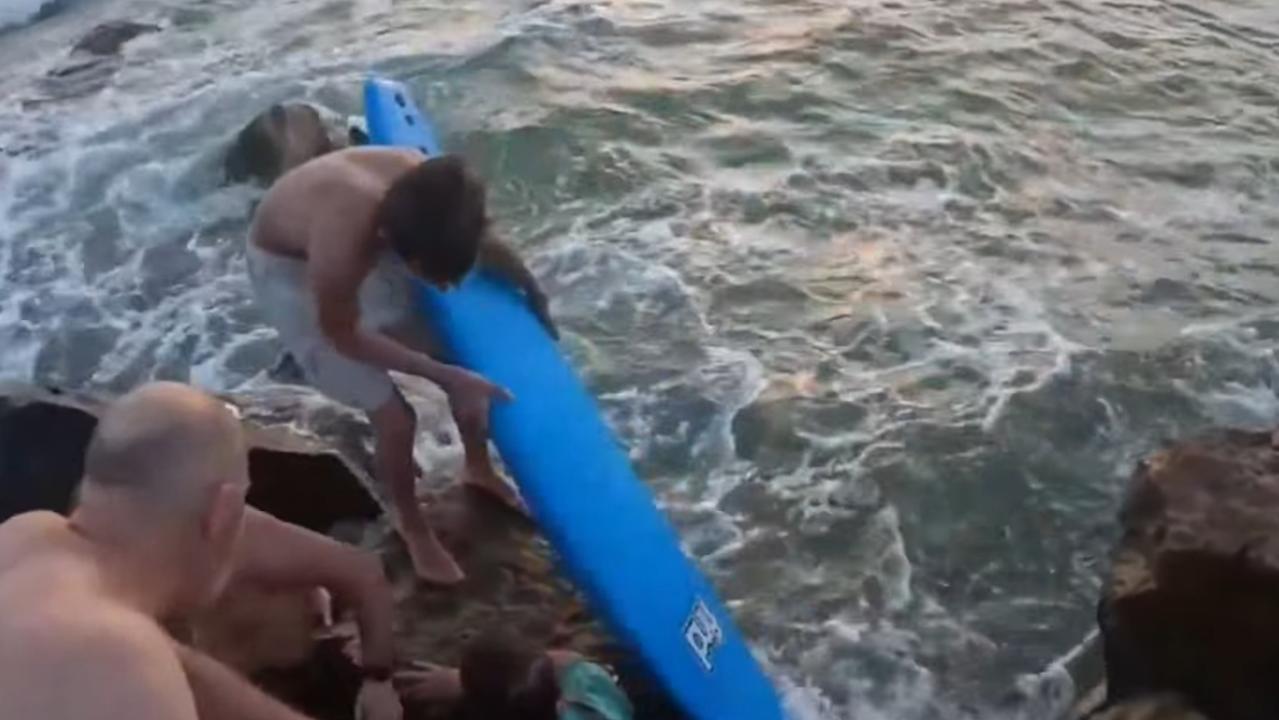
Kai and his friend Cruz Campbell, also 14, were initially flagged down by the grandmother, whose autistic* grandson was caught in a rip about 20m from shore.
The pair, both year 9 students at Henley High School, sprang into action.
Kai paddled out to the struggling boy and tried to pull him onto his surfboard but became stuck on a rock by the boat ramp in the March 5 rescue.
During the incident, the teens were thrown into the surrounding rocks by the rough waters.
But while Kai and Cruz were focused on saving the boy, the child’s grandmother ventured* out into the water and became caught in the rip herself.

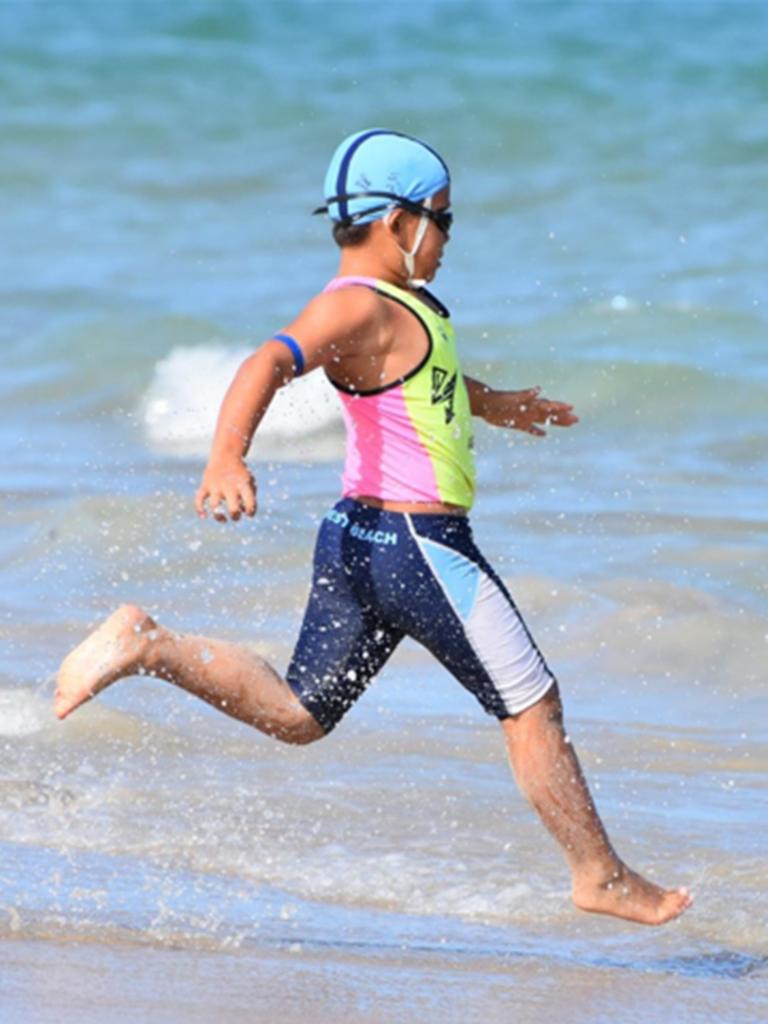
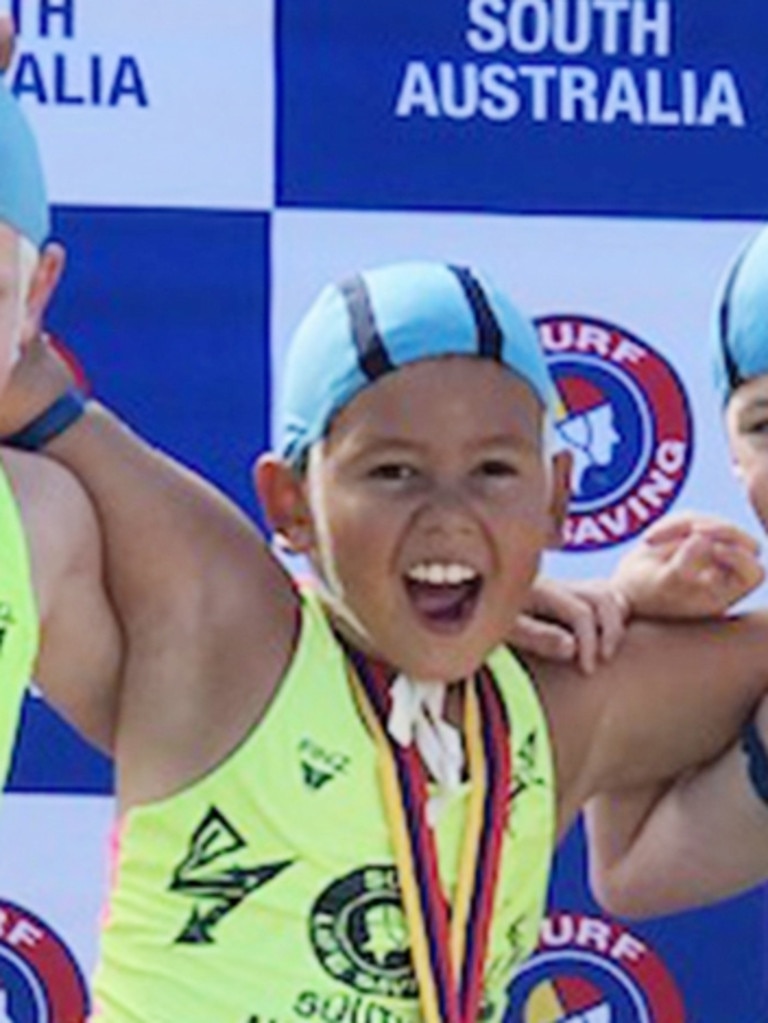
Two other teen boys, Louis Kempster and Riley Kellock, who were also surfing at the time, joined in to save the grandmother and help pull the boy to safety. Once he was out of the water, Kai called emergency services to help assist the grandmother.
After a struggle, which Kai said lasted about half an hour, the woman managed to get close to the rocks, and the boys jammed a surfboard between her and the rocks to keep her safe from injury.
The incident was captured via Cruz’s GoPro camera.
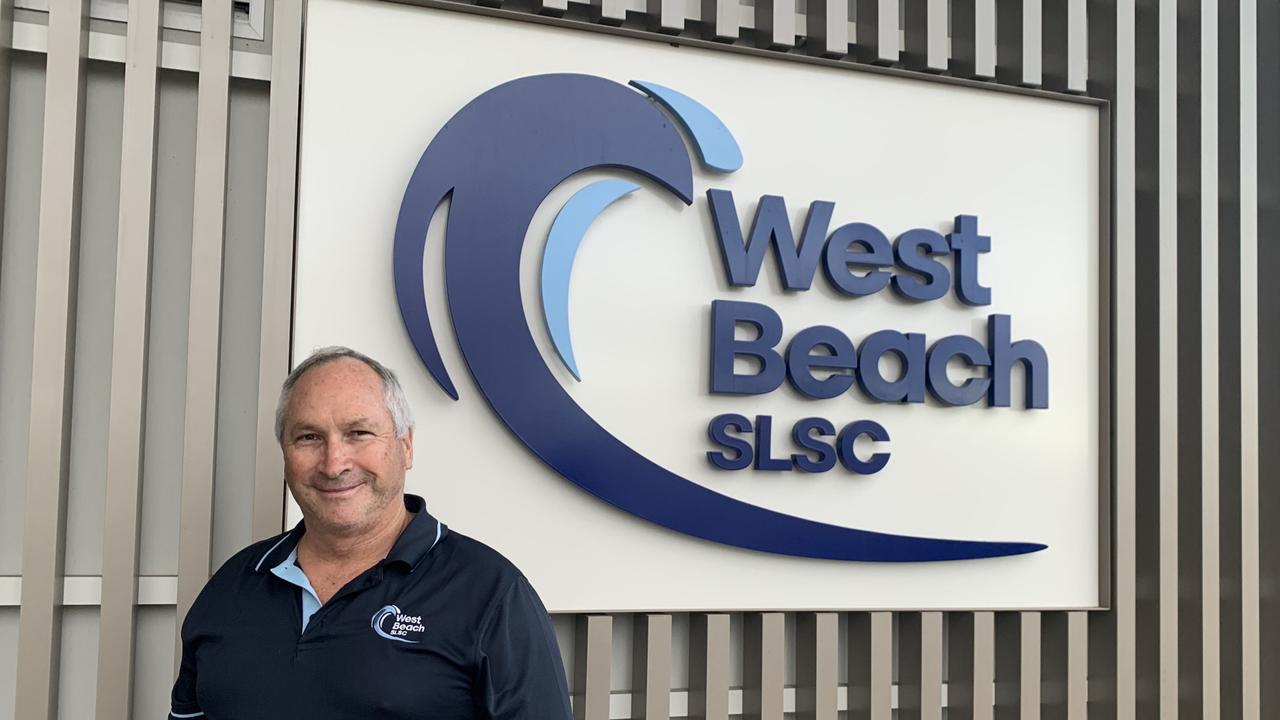
Mr Cunningham, on behalf of the club, will submit the rescue to Surf Life Saving SA for review and Kai will be in the running for a state-level award.
“It was an outstanding* rescue,” Mr Cunningham said.
Just months before his heroic actions, Kai had completed his surf rescue certificate, which qualifies him to join beach patrols as a volunteer surf lifesaver.
“The skills they learn are able to be used in real life situations,” Mr Cunningham said.
“Our members use these skills when they’re not on patrol.”
Surf Life Saving SA chief executive Damien Marangon said he was “incredibly proud” of the teens.
“Their quick-thinking and skilled response, undertaken despite the personal risks, are truly commendable* and turned a potentially tragic incident into a story of bravery and exceptional rescue,” Mr Marangon said.
The incident highlighted “how vital water safety education and lifesaving skills are for young people”.
“These skills can truly make the difference when it matters most,” he said.
HOW TO STAY SAFE
Right around Australia, volunteer surf lifesavers and professional life guards patrol the nation’s beaches to keep us all safe – they’re our beach safety experts.
Surf Life Saving SA has provided these top tips for staying safe at the beach – but they apply wherever you are in Australia and when you’re visiting beaches overseas:
- Never swim alone.
- Read and obey the beach safety signs.
- Don’t swim directly after a meal.
- Don’t swim under the influence of alcohol or drugs.
- Always check the depth of the water.
- Never run or dive into the water. Even if you have checked the depth, water conditions can change.
- Learn how to spot a rip and keep clear of it.
- If you get into trouble in the water, stay calm. Signal for help by holding up one arm and waving, float and wait for assistance.
- Be sun smart: slip, slop, slap, seek, slide. Slip on a shirt, slop on 30+ sunscreen, slap on a brimmed hat, seek shade, slide on sunglasses. Remember to reapply sunscreen every two hours and after swimming.
- Keep the beach clean, put your rubbish in a bin. Leave nothing but footprints.
- Keep out of dunes and fenced areas. They are there to preserve the beach environment.
- Always swim at beaches with patrolling lifesavers or lifeguards.
The Beachsafe App can find your closest patrolled beach.
POLL
GLOSSARY
- rip: very strong, narrow, dangerous ocean current that pulls out to the sea; a strong rip can pull you away from the beach
- autistic: autism spectrum disorder is condition affecting how a person’s brain develops and functions, meaning someone with autism may feel and react to things differently
- ventured: to risk going somewhere or doing something that might be dangerous or unpleasant
- outstanding: exceptional, excellent, much better than the usual
- commendable: deserving praise
EXTRA READING
Teens hailed for brave surf rescue
Brave teens applauded for rescue
QUICK QUIZ
- Who did the boys rescue and why did they need rescuing?
- At which beach did the incident occur?
- Kai recently qualified to do what with his surf life saving club?
- Who did Kai call for assistance once he was out of the water?
- How did the teenagers stop the grandma from being injured by the rocks?
LISTEN TO THIS STORY
CLASSROOM ACTIVITIES
1. Spot a rip!
Do you know how to spot a rip? Use your research skills if you don’t. Use the information you know or that you find to create a poster or the lyrics for a catchy song or words for a rhyme that will help younger kids understand what a rip is and how to spot one.
Time: allow at least 40 minutes to complete this activity
Curriculum Links: English, Health and Physical Education
2. Extension
“Make the difference!” What are some actions that you, your school and your community could take to help everyone follow this idea in everyday life? Write them down.
Time: allow at least 20 minutes to complete this activity
Curriculum Links: English, Personal and Social Capability
VCOP ACTIVITY
Everyday heroes
Write a news report, diary entry, or letter celebrating the bravery of Kai Nixon and his friends during the rescue at West Beach.
Sentence starters for support:
“It was a sunny day when Kai and his friends saw someone in trouble …”
“I think what Kai did was very brave because …”
“If I were there, I would have felt …”
“Thanks to their training, they knew exactly what to do.”
After you have written, have a go at editing and improving your writing using VCOP:
VCOP element check and challenge
Vocabulary
Highlight one simple word (e.g., “good”, “nice”, “brave”). Can you find a more powerful word? (e.g., “courageous”, “heroic”, “dangerous”)
Connectives
Add connectives to show cause and effect or time. (e.g., “because”, “although”, “meanwhile”, “after that”)
Openers
Try starting one sentence with a time word or -ing phrase. (e.g., “Without hesitating,” or “During the rescue,”)
Punctuation
Can you add an exclamation mark (!) or question mark (?) to show emotion? Check for capital letters and full stops too.
Brave comes in all shapes and sizes
Write about a time you or someone else showed bravery or helped someone in need. If you can’t think of a real event, imagine one!
Write 2–3 paragraphs with a clear structure (introduction, detail, reflection). Use emotive and descriptive language to retell the event. Include time connectives to link it all together (e.g., “Suddenly”, “After a while”, “Later that day”).
After you have written, have a go at editing and improving your writing using VCOP:
VCOP element check and challenge
Vocabulary
Highlight one simple word (e.g., “good”, “nice”, “brave”). Can you find a more powerful word? (e.g., “courageous”, “heroic”, “dangerous”)
Connectives
Add connectives to show cause and effect or time. (e.g., “because”, “although”, “meanwhile”, “after that”)
Openers
Try starting one sentence with a time word or -ing phrase. (e.g., “Without hesitating,” or “During the rescue,”)
Punctuation
Can you add an exclamation mark (!) or question mark (?) to show emotion? Check for capital letters and full stops too.


